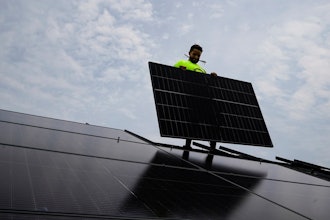Google and Apple both recently announced they run 100 percent on renewable energy, a move likely to push other top companies to complete the transition to renewable energy to stay competitive in attracting consumers and potential employees. It’s not just major companies looking to be sustainable – Millennials and Generation Z have both said that a company’s impact on society affects their decision to work for or purchase from the company.
Switching to renewable energy and adopting other sustainable practices is good corporate social responsibility in terms of benefitting the environment and helping reduce the load on the electrical grid. It is also good for a company’s bottom line. Incorporating renewable energy solutions such as solar generation into a company’s energy portfolio can reduce energy costs and help organizations hedge against future increases in these ongoing operating costs.
Choosing a Renewable Energy Source
If a manufacturer has decided to take the leap and implement a renewable or alternative energy generation source, there are several factors they need to consider. Implementing any new energy source can require a sizeable up-front investment. However, federal tax credits/incentives as well as some state policies, can reduce investment costs and accelerate return on investment. Investment in your own renewable energy generation source may be one of the fastest paybacks (3 to 6 years with a 30+ year production life of the system). In some markets, low-interest loans for renewable energy projects are also available to encourage companies to implement a source like solar. PACE financing is growing rapidly in many local markets, allowing solar projects financing to be paid back via property taxes, thereby freeing the owner from increased debt coverage ratios and liability. Companies should consider the long-term savings and energy cost predictability a renewable energy source can provide them, especially if the source is able to fully power the facility.
Once companies have moved past the cost barrier, the next challenge is selecting the correct renewable or alternative energy source. Certain types, such as wind turbines, may only be feasible in rural or coastal areas, while local biomass and others may have local resource limitations. Other constraints may be the infrastructure of the facility. For example, for a company to implement solar energy, the optimal installation would require a fairly flat roof with some load bearing capacity. (Usually if HVAC equipment is on the roof, it should be able to accommodate the relatively minor load of solar). Solar energy is particularly attractive for companies looking to implement renewable energy on their warehouses.
Many utility companies also offer options for businesses to purchase renewable energy through specific programs. This might be the ideal option for companies that want to reduce their use of fossil fuel-based energy but don’t have the ability to install a renewable energy source at their facility.
Implementing Other Sustainable Practices
If a company is looking to install a renewable energy source, chances are the company’s sustainability goals don’t end there. To continue decreasing their carbon footprint, there are additional sustainable practices companies can implement.
These practices include installing LED and motion-activated lighting and radiant-heat flooring, using tube lighting that reflects sunlight, going paperless, recycling oil and water, investing in new, energy-efficient equipment, partnering with vendors who are also committed to sustainable practices, and conducting a sustainability audit of their supply chain.
All of these practices can help make manufacturers’ facilities more energy efficient, thus reducing the company’s carbon footprint and energy costs. They also complement a company’s decision to install a renewable energy source, like solar or geothermal.
Making the decision to invest in a renewable energy source is a big step for any company, no matter its size. However, making the decision based on the company’s energy goals, budget and facility type can help guide leaders to the best decision for their company. Pairing that renewable energy source with additional sustainable practices will help further decrease its carbon footprint, improve the bottom line, and increase brand loyalty with consumers.
Haseeb Qadri is President and CEO of NovaSol Energy, an independent renewable energy company focused on providing renewable energy solutions to commercial and utility customers.























